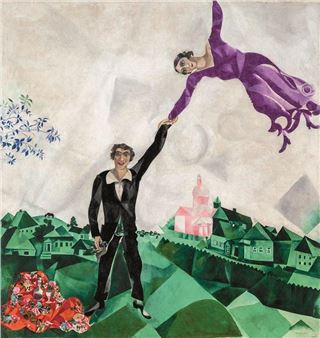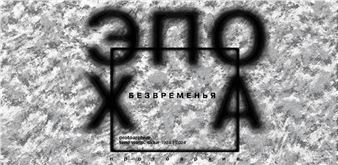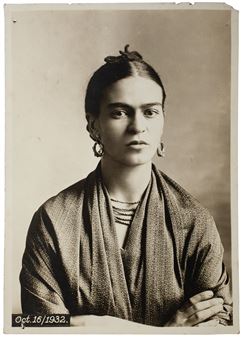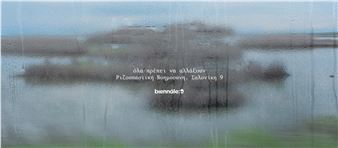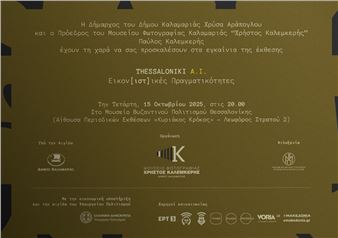Organic Art. The Avant-Garde in Petrograd
The Russian avant-garde has been an important synthetic artistic phenomenon in the history of the 20th century. Taking the Russian avant-garde as a starting point, MOMus-Museum of Modern Art – Costakis collection examines art in a range of scientific, research and laboratory activities that place music, literature, architecture, cinema, theater, dance and their dialogue with the sciences as well as the relation between Art and Nature, in a common trajectory. One of the best examples of the synthesis of the arts is the School of Organic Culture in Petrograd/Leningrad under the directorship and theoretic supervision of Mikhail Matiushin (1861-1934).
The “Organic Art” exhibition focuses on the study of the Synthesis of the Arts and particularly in the dialogue between the visual arts with poetry, movement and sound as well as the relation between Art and Nature. At the same time, innovations in the field of Art Education initiated and applied at GINKhUK (Leningrad State Institute of Artistic Education) are presented.
The exhibition refers to the course taught in Petrograd/Leningrad in the 1920s by the painter and musician Mikhail Matiushin. For Matiushin, art exists in nature, in the microcosm and the macrocosm and a special training of our senses is needed in order to locate it. According to Matiushin, the Theory of Extended Viewing can become such training tool. Painting cannot be statical, it is constantly transformed and it is closely connected with movement and sound.
Mikhail Matiushin was a professional musician, experimental music composer and a painter. As a professor in the Department of Organic Culture of the State Institute of Artistic Education (1923-1926) he proposed to his students a system of understanding the world which he named ZORVED from the initials of the Russian words "Viewing" and “Knowledge”.
The observation of nature and its changes in color, light, motion and sound within the maximum activation of the five senses is recorded by a series of experiments that were then developed and evolved by his own students. The exhibition presents approximately 250 works of art as well as important archival material.
Informative material in the exhibition is also connected with the works by Natalia Enman, a member of the dance and music group “Geptakhor”, a dancer and painter influenced by the Isidora Duncan and connected with the teachings of Organic Art. The exhibition presents, among others, the work of five important but not so well known and studied women artists of the three first decades of 20th century: Elena Guro, Ksenia Ender, Maria Ender, Ludmila Ivanova, Natalia Enman.
The works and archival material come from the Costakis collection of MOMus-Museum of Modern Art. The works by Liudmila Ivanova are a generous donation to MOMus-Museum of Modern Art by professors John E. Bowlt and Nicoletta Misler.
The experimental sound machines from the 1920s are reconstructed especially for the exhibition by Andrei Smirnov, historian of the music of Russian Avant-garde and director of the Theremin Center.
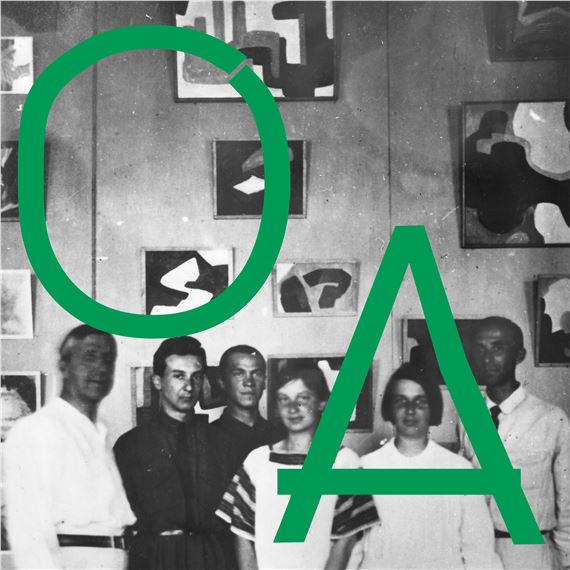
Recommended for you
The Russian avant-garde has been an important synthetic artistic phenomenon in the history of the 20th century. Taking the Russian avant-garde as a starting point, MOMus-Museum of Modern Art – Costakis collection examines art in a range of scientific, research and laboratory activities that place music, literature, architecture, cinema, theater, dance and their dialogue with the sciences as well as the relation between Art and Nature, in a common trajectory. One of the best examples of the synthesis of the arts is the School of Organic Culture in Petrograd/Leningrad under the directorship and theoretic supervision of Mikhail Matiushin (1861-1934).
The “Organic Art” exhibition focuses on the study of the Synthesis of the Arts and particularly in the dialogue between the visual arts with poetry, movement and sound as well as the relation between Art and Nature. At the same time, innovations in the field of Art Education initiated and applied at GINKhUK (Leningrad State Institute of Artistic Education) are presented.
The exhibition refers to the course taught in Petrograd/Leningrad in the 1920s by the painter and musician Mikhail Matiushin. For Matiushin, art exists in nature, in the microcosm and the macrocosm and a special training of our senses is needed in order to locate it. According to Matiushin, the Theory of Extended Viewing can become such training tool. Painting cannot be statical, it is constantly transformed and it is closely connected with movement and sound.
Mikhail Matiushin was a professional musician, experimental music composer and a painter. As a professor in the Department of Organic Culture of the State Institute of Artistic Education (1923-1926) he proposed to his students a system of understanding the world which he named ZORVED from the initials of the Russian words "Viewing" and “Knowledge”.
The observation of nature and its changes in color, light, motion and sound within the maximum activation of the five senses is recorded by a series of experiments that were then developed and evolved by his own students. The exhibition presents approximately 250 works of art as well as important archival material.
Informative material in the exhibition is also connected with the works by Natalia Enman, a member of the dance and music group “Geptakhor”, a dancer and painter influenced by the Isidora Duncan and connected with the teachings of Organic Art. The exhibition presents, among others, the work of five important but not so well known and studied women artists of the three first decades of 20th century: Elena Guro, Ksenia Ender, Maria Ender, Ludmila Ivanova, Natalia Enman.
The works and archival material come from the Costakis collection of MOMus-Museum of Modern Art. The works by Liudmila Ivanova are a generous donation to MOMus-Museum of Modern Art by professors John E. Bowlt and Nicoletta Misler.
The experimental sound machines from the 1920s are reconstructed especially for the exhibition by Andrei Smirnov, historian of the music of Russian Avant-garde and director of the Theremin Center.
Contact details


 ARTISTS
ARTISTS








